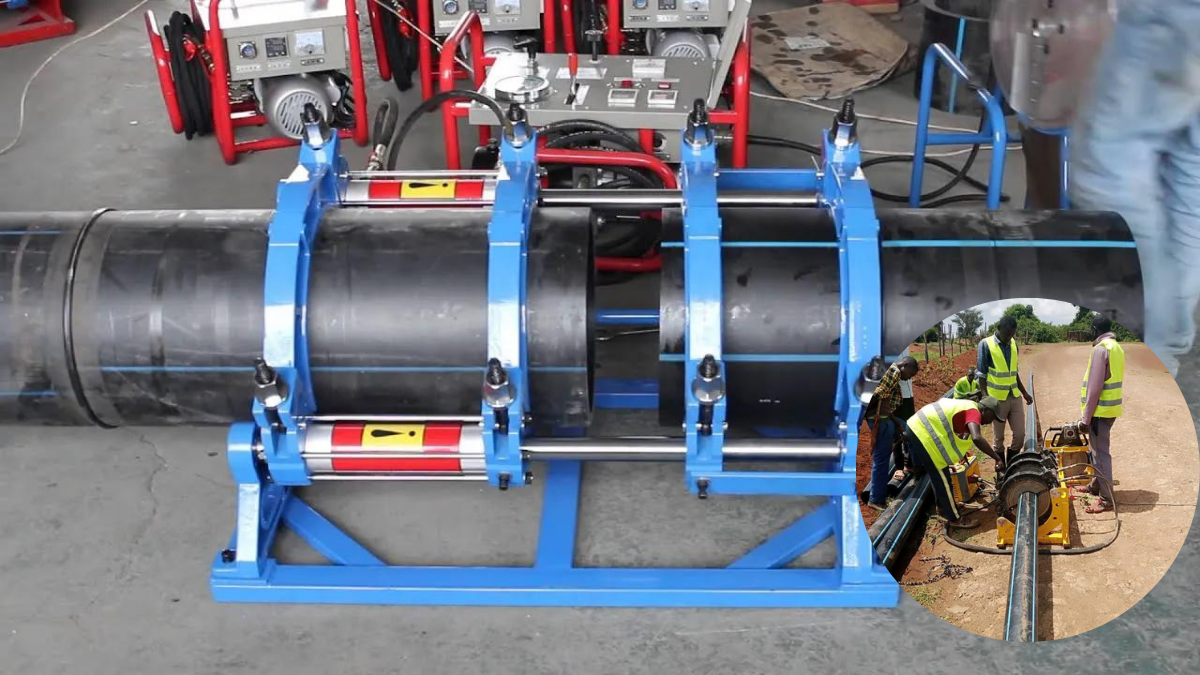High-density polyethylene (HDPE) welding is a widely utilized technique for joining HDPE pipes and fittings, establishing itself as the predominant method in the industry. This article explores the intricacies of HDPE Butt Welding, its applications, and the advanced technology employed by Refinar East Africa to ensure top-notch quality and compliance with codes and regulations.
What is HDPE Butt Welding?
HDPE Butt Welding involves the fusion of flat surfaces using hot plates, primarily applied to components like HDPE pipes, tubes, or fittings. This technique, leverages state-of-the-art technology to guarantee precision and control, ultimately minimizing costly repairs and enhancing compliance with industry standards. The result is a reliable plumbing system that significantly contributes to the durability, efficiency, and safety of building occupants.
How does HDPE Butt Welding Work?
The process involves heating the ends of two HDPE pipes or fittings on a specialized heated plate until they melt. Subsequently, the molten pipes are pressed together under controlled pressure, forming a permanent joint. The weld then cools and solidifies, establishing a robust bond between the two components.
Applications of HDPE Pipes
HDPE pipes find extensive use in a variety of applications, including water mains, gas mains, sewer mains, slurry transfer lines, rural irrigation, fire system supply lines, electrical and communication conduits, stormwater pipes, and drainage pipes. The versatility of HDPE makes it an ideal choice for diverse industries due to its exceptional performance and durability.
Advantages of HDPE BUTT Plumbing :
Chemical Resistance
HDPE exhibits remarkable resistance to chemicals and biological growth, making it the material of choice for transporting and storing chemicals, acids, and corrosive materials. This ensures the integrity of the transported substances without compromising the pipeline’s structural integrity.
Corrosion Resistance:
Unlike metal pipes, HDPE pipes do not rot, rust, or corrode. This corrosion resistance ensures a longer lifespan for HDPE pipes, reducing the frequency of maintenance and replacement.
Flexibility:
The inherent flexibility of HDPE pipes makes them adaptable to various industries, facilitating ease of installation and providing solutions for complex piping configurations.
Low Thermal Conductivity:
HDPE pipes maintain more even temperatures compared to metal pipes, reducing the need for additional insulation. This characteristic contributes to energy efficiency and cost savings over the long term.
Reduced Installation Costs:
The flexibility of HDPE pipes not only makes them easy to handle but also reduces installation costs. The streamlined installation process translates into savings on labor and equipment expenses.
Leak-Free Systems:
HDPE’s heat fusion joints create leak-free systems, ensuring the integrity of the pipeline and preventing costly leaks. This characteristic is crucial for industries where a reliable and secure fluid transport system is paramount.
What are the Advantages of HDPE Butt Welding?
Strong and Reliable Joints: HDPE butt welds match the strength of the pipe, ideal for high-pressure applications.
Leak-Proof: Fusion creates a continuous joint, eliminating the risk of leaks.
Durable: HDPE’s resistance to corrosion and chemicals ensures long-lasting butt welds.
Versatile: HDPE butt welding accommodates various pipe diameters and thicknesses.
How can I learn more about HDPE butt welding?
If you want to learn more about HDPE butt welding, look no further than Refinar East Africa. As an industry leader, our company specializes in using cutting-edge technology to assure the best quality HDPE butt welding and Plumbing operations.
Get in Touch:
Looking for HDPE butt Plumbing Services? Contact Refinar East Africa today at 0707075702 or Info@refinareastafrica.com for more information.


